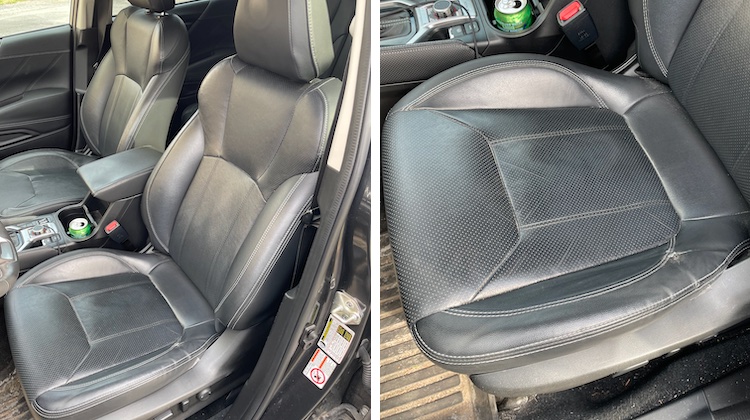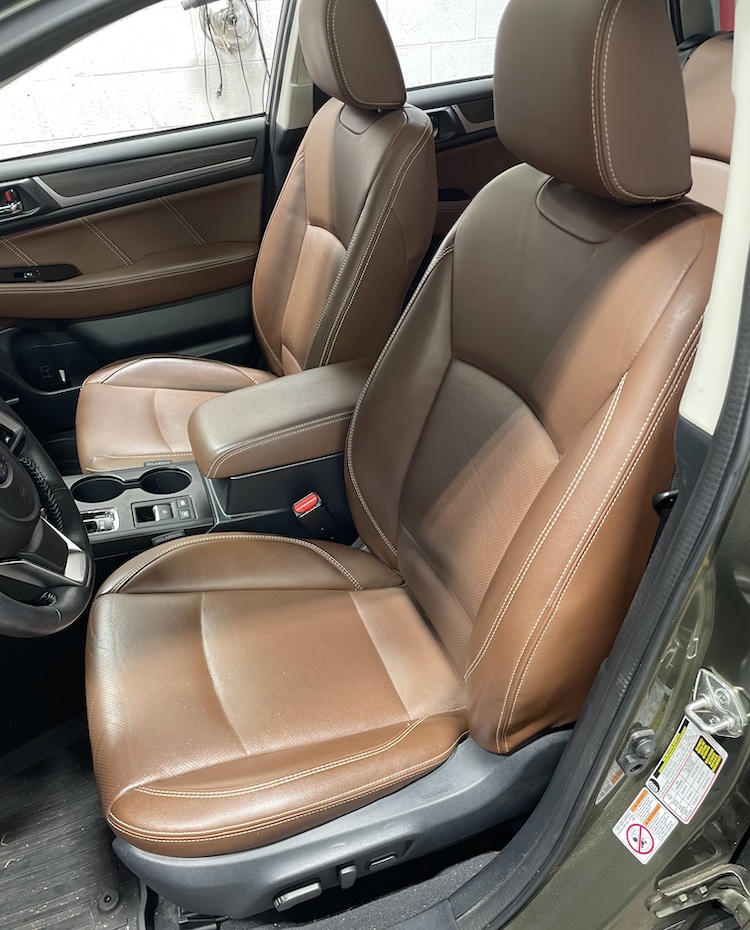
Over the last two years, our auto upholstery shop has noticed a recurring issue with Subaru vehicles — specifically, a torn driver-side, seat-bottom, left bolster. It’s become so common that we’ve come to expect it, and chances are other upholstery shops have too.
The problem stems from Subaru’s material choices between 2012 and 2019. During those years, many Subaru models were equipped with seats that had leather inserts but vinyl on the side bolsters. Unfortunately, the vinyl used doesn’t hold up well over time. Around the six-year mark, it begins to crack and tear — especially in high-wear areas like the driver’s side bolster.
This widespread problem presents a unique opportunity for auto upholstery pros to help Subaru owners and make a profit.
Below are three repair options, and the pros and cons of each:
Installing OEM replacement parts
One solution is to replace the seat upholstery with an OEM part. Subaru’s OEM covers are readily available and relatively inexpensive compared to those from other automakers.
The advantage of going OEM is that customers receive a cover that matches their existing interior in color, texture and stitching pattern. For trimmers, installation is quick and straightforward. However, the drawback is that the replacement uses the same low-quality vinyl that failed in the first place, so the new cover might not last any longer than the original.
We typically charge $200 in labor, in addition to the cost of parts.
Installing aftermarket replacement parts
Another option is replacing the upholstery with an aftermarket cover from a company like Leather Craft.

These covers are about half the cost of OEM and offer some significant upgrades. Most notably, they use leather on all face panels — including the bolsters — making them more durable than the original. Leather Craft offers matching backrests with airbag-certified seams and stocks the most common Subaru interior colors, such as black, gray and tan.
Another aftermarket company that provides Subaru seat upholstery is Katzkin. However, their pattern differs slightly from OEM. For example, the 2018 Subaru Outback’s factory insert appears as one large piece with face-stitched seams, while Katzkin’s aftermarket covers may use three individual panels sewn together. It’s a subtle difference most customers won’t notice, but it’s worth mentioning during the estimate. Also, Katzkin doesn’t offer less common colors, like brown, and sews a branded label onto the left bolster, which not all customers may like.
Richmond Auto Upholstery is another aftermarket option worth considering. Unlike Katzkin, Richmond offers covers in every OEM color Subaru has produced, including brown. Their patterns are also an exact match. However, their prices are comparable to OEM covers, and they glue the material to the sew foam, which can cause subtle but visible wrinkles — a pet peeve for many trimmers.
We typically charge $200 in labor, in addition to the cost of parts.
Reupholstering the seat bolster
A third repair option is replacing just the damaged bolster. This involves removing the seat cover, opening the seams, and replacing the damaged panel with new material.
This approach is cost-effective, profitable and efficient. Material costs are low and the job only takes a few hours. Stocking a few yards of common colors like black, gray and tan allows you to schedule jobs faster. One yard can typically yield up to four bolster repairs.
We typically charge $350.
Cash in on this opportunity
With over 600,000 Subaru vehicles sold each year in the U.S. and a consistent pattern of bolster deterioration, the demand for these repairs isn’t going away anytime soon. If your shop isn’t already promoting this service, now is the time.
Make it known — through your website, social media and word of mouth — that you specialize in fixing a problem thousands of Subaru owners face.
Turn this common flaw into a steady revenue stream. Subaru owners will thank you for it.
Recent Comments